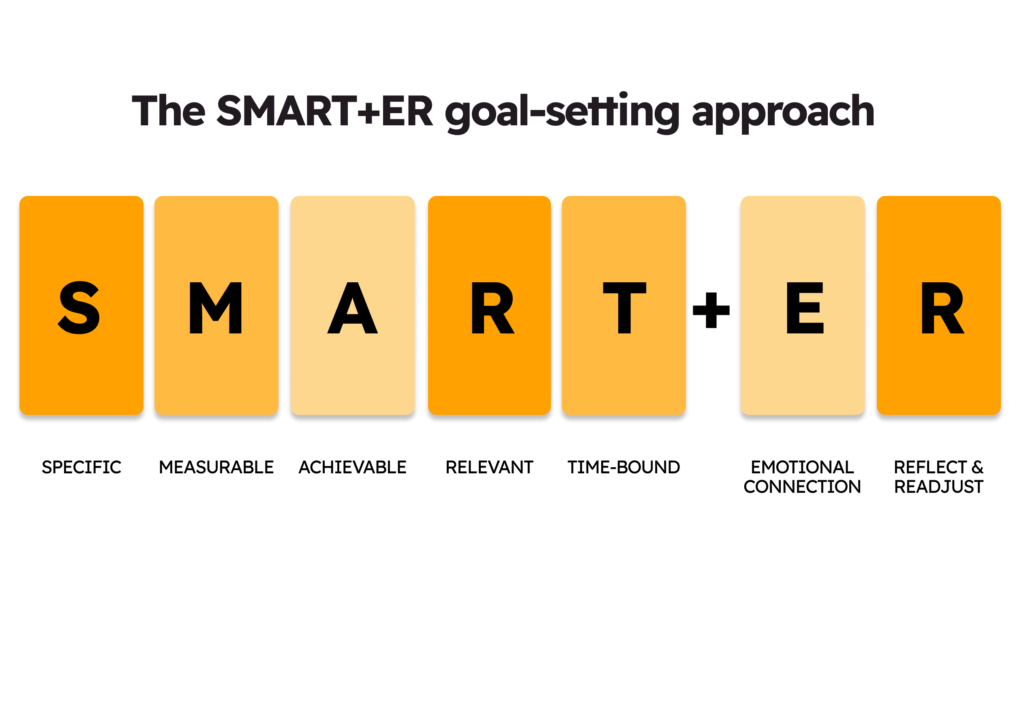A new(ish) approach to goal-setting
A new(ish) approach to goal-setting
5 minutes

Setting and achieving goals is a fundamental aspect of personal and professional development. Goals act as guiding beacons, motivating us to push our boundaries and strive for success. However, it’s important to recognise that the way we approach goal setting has evolved in our fast-paced world.
The traditional SMART (Specific, Measurable, Achievable, Relevant, Time-bound) acronym, while still useful, may need to adapt to the changing dynamics of our modern environment, hence adding the E (Emotional Connection) and R (Reflect and Readjust) to the formula.

The Spectrum of Goal Setting
In the realm of goal setting, one can visualise a spectrum. At one end are the easily attainable goals, which serve as confidence boosters, helping us regain our footing and build momentum. These are the small, incremental steps that set us in the right direction. At the opposite end of the spectrum are the audacious stretch goals, the ones that give us butterflies in our stomachs. These are the challenges that demand us to think outside the box. To maximise the benefits of goal setting, it’s helpful to incorporate layers – a grand, audacious goal supported by sub-goals. This allows us to celebrate each milestone, even if we haven’t reached the ultimate destination.
The Personal Connection
One of the essential elements to elevate the effectiveness of goal setting is linking the goal to a personal emotional driver. When a goal resonates with something deeper within us, it becomes significantly more attainable. These emotional drivers could be a desire to earn a stellar performance review, establish oneself as an expert in the field, create something valuable for others, or align the goal with a profound personal investment. Such emotional connections infuse our goals with purpose and passion, making them more likely to be achieved.
The Importance of Adaptation
Another critical aspect of contemporary goal setting is the ability to reflect and readjust goals. In a world that constantly evolves, rigid goals can quickly become irrelevant or unattainable. To avoid the negative impact of unyielding objectives, we must embrace flexibility. Regularly reviewing and adapting our goals ensures they remain relevant and supportive of our aspirations. The ability to pivot and recalibrate is a powerful tool in the arsenal of goal setting.
In conclusion, the art of goal setting has not lost its significance; it has evolved to meet the demands of our agile and fast-paced world. Embracing a spectrum of goals, connecting them to personal emotional drivers, and allowing for adaptability are key principles that can maximise the effectiveness of our goal-setting endeavours. By doing so, we can navigate the challenges and uncertainties of modern life with confidence, resilience, and a sense of purpose.

Hellomonday